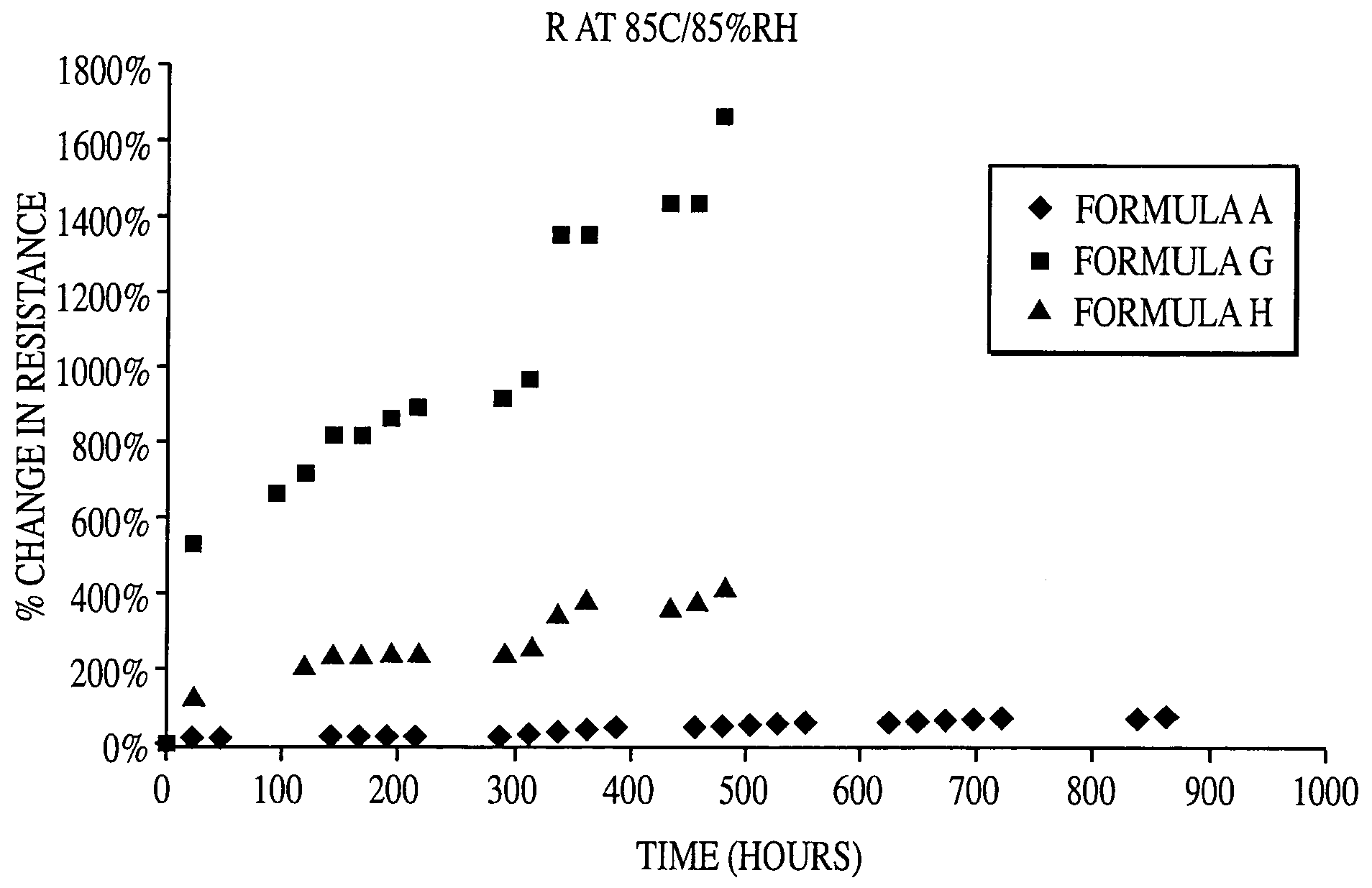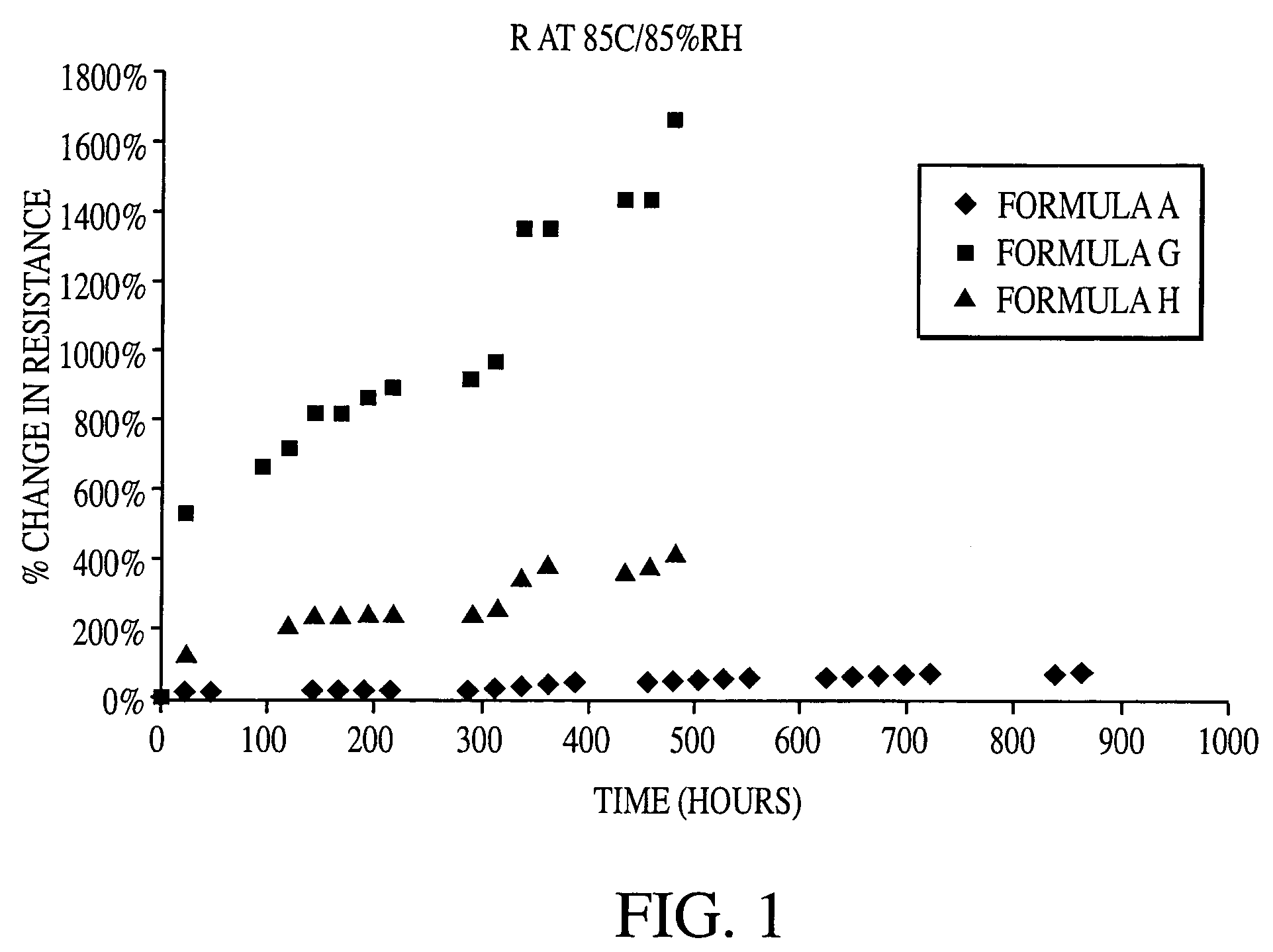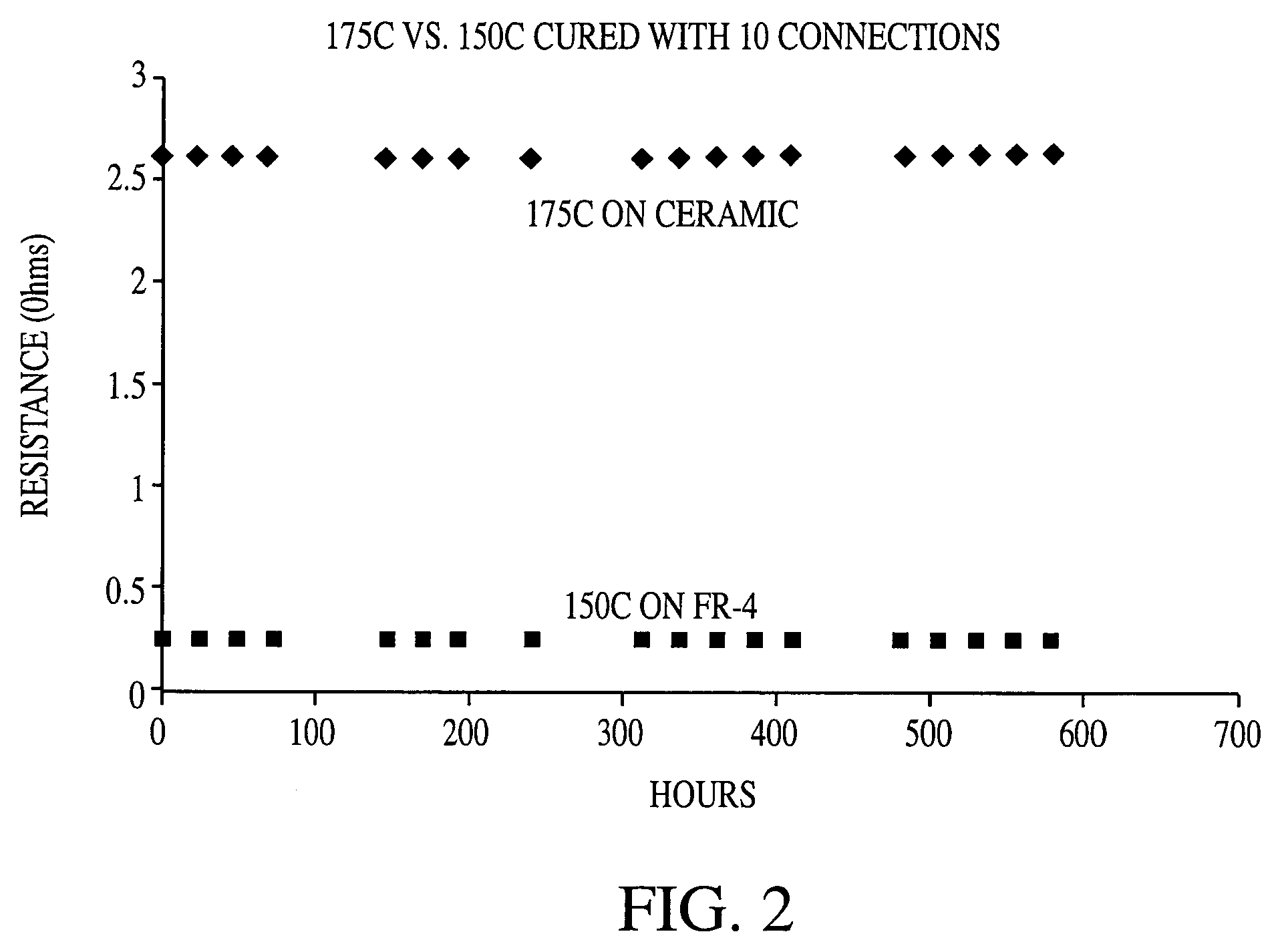Conductive materials with electrical stability and good impact resistance for use in electronics devices
a technology of which is applied in the direction of non-conductive materials with dispersed conductive materials, printed circuit assembling, and epoxynovolac adhesives, etc. it can solve the problems of inconvenient use, inconvenient use, and high process temperature, so as to improve electrical stability and impact resistance and stable shelf life.
- Summary
- Abstract
- Description
- Claims
- Application Information
AI Technical Summary
Benefits of technology
Problems solved by technology
Method used
Image
Examples
example 1
[0031]Samples of a prepolymer and a physical blend of the epoxy-amine system were prepared. The physical blend of epoxy and amine (Component A) was made by mixing 55.56 weight percent of a mixture of Diglycidyl ether of bisphenol-A and Diglycidyl ether of Bisphenol-F (commercially available as ZS1059 from Tohto Kasei Co. and 44.44 weight percent of poly(oxy(methyl-1,2-ethanediyl)), alpha-(2-aminomethylethyl) ometa-2(2-aminomethlethoxy) (commercially available as Jeffamine ® D-2000 from Huntsman Petrochemical Co.) The prepolymer (Component B) was formed by heating the physical blend to 120° C. for 6 hours in a conventional oven. Components A and B were tested by an IR spectrum and Component B exhibited a peak at wavelength of 3439 cm−1 which indicates the existence of a hydroxyl functional group in the sample. component A did not have a peak at wavelength 3439 cm−1 which indicates that there is no hydroxyl functional group. A typical polymerization reaction of an amine and epoxy syst...
example 2
[0035]The initial contact resistance of the conductive adhesives was tested via five different adhesive formulations containing epoxy-aliphatic amine prepolymer catalyzed by imidazole. The formulations were made by first dissolving Novolac 1166 in γ-butyrolactone at 120° C. The solution was cooled to room temperature and the remainder of the ingredients were added and thoroughly mixed by a mechanical mixer. The compositions of the formulations are set out in Table 2.
[0036]
TABLE 2Conductive Adhesives with Epoxy-Aliphatic Amine PrepolymerFormulaFormulaFormulaFormulaFormulaIngredientABCDENovolac 11660.720.720.610.610.72γ-butyrolactone5.625.624.754.755.62Component B14.0614.0611.7811.8814.064-methyl-20.720.720.600.600.72phenylimidazole8-hydroxyquinoline1.301.301.101.101.30BYK-W90100.070.070.060.060.07Adipic Acid————0.03Silver SF-9877.51————Silver SF-W—77.52———Silver SF-80——81.0——Silver SF-84———81.0—Silver SF-85HV————77.48
[0037]The formulated adhesive was stenciled onto either a ceramic o...
example 3
[0041]Two additional samples were prepared in the same manner as the samples in Example 2 and their formulations are shown in Table 5.
[0042]
TABLE 5Conductive Adhesives with Different Catalystsand Corrosion InhibitorsIngredientFormula GFormula HNovolac HT 94900.720.72BCaA6.06.0Component B14.3914.39Dyhard 100S1.211.21HEKARM / diuron0.610.618-hydroquinoline—2.72BYK-A11200.080.08Silver SF-9676.9976.99
After the samples were formulated and placed on the boards, the initial contact resistance was measured. The boards were then placed into a humidity chamber that remained at 85° C. and 85% relative humidity and the contact resistance was measured periodically by a Keithley 2010 multimeter. As shown in FIG. 1, the resistance values changed more significantly for the samples without any corrosion inhibitor. Also, the resistance is much more stable under high temperature and high humidity conditions when imidazole is utilized as the catalyst and when the corrosion inhibitor is incorporated into ...
PUM
| Property | Measurement | Unit |
|---|---|---|
| weight percent | aaaaa | aaaaa |
| weight percent | aaaaa | aaaaa |
| weight percent | aaaaa | aaaaa |
Abstract
Description
Claims
Application Information
 Login to View More
Login to View More - R&D
- Intellectual Property
- Life Sciences
- Materials
- Tech Scout
- Unparalleled Data Quality
- Higher Quality Content
- 60% Fewer Hallucinations
Browse by: Latest US Patents, China's latest patents, Technical Efficacy Thesaurus, Application Domain, Technology Topic, Popular Technical Reports.
© 2025 PatSnap. All rights reserved.Legal|Privacy policy|Modern Slavery Act Transparency Statement|Sitemap|About US| Contact US: help@patsnap.com



